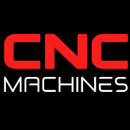The Evolution of CNC Technology: A Historical Perspective

The Evolution of CNC Technology: A Historical Perspective
The development of CNC (Computer Numerical Control) technology has revolutionized the manufacturing industry, enabling unprecedented precision, efficiency, and flexibility in production processes. This article explores the history of CNC machines, tracing their evolution from early numerical control systems to the advanced CNC technologies we see today, and highlights how these innovations have transformed manufacturing.
1. The Origins of Numerical Control (NC)
The Birth of Numerical Control (1940s-1950s)
The concept of numerical control can be traced back to the 1940s and 1950s, when engineers began exploring ways to automate machine tool operations. The early stages of NC were characterized by the following developments:
- Punched Tape Control: In the late 1940s, researchers at the Massachusetts Institute of Technology (MIT) developed the first NC machines using punched tape. The punched tape contained a series of holes that represented the machine's movements, allowing it to perform specific machining tasks automatically.
- The First NC Machines: The first commercially successful NC machines were introduced in the early 1950s. These machines utilized punched tape and were primarily used for milling and drilling operations in aerospace and defense industries.
Key Innovations
- Automated Tool Paths: The introduction of NC enabled automated control of tool paths, significantly reducing manual intervention and increasing precision.
- Increased Production Efficiency: Manufacturers began to see a reduction in production time and an increase in output due to the automation of machining processes.
2. The Rise of Computer Numerical Control (CNC)
Transition to CNC (1960s)
The transition from NC to CNC technology began in the 1960s with the advent of computers. This shift brought about several key advancements:
- Introduction of Computers: The integration of computers allowed for more complex and flexible programming. Instead of punched tape, CNC machines could now accept input directly from a computer, enabling real-time changes to machining operations.
- G-Code Language: The development of G-code, a standardized programming language for CNC machines, made it easier for operators to write and modify machining instructions. G-code became the foundation of CNC programming, allowing for precise control of machine movements.
Impact on Manufacturing
- Enhanced Precision and Flexibility: CNC machines provided manufacturers with the ability to produce intricate designs with tight tolerances, expanding the range of possible applications.
- Reduced Setup Times: With CNC technology, setup times were minimized, as machines could be easily reprogrammed for different tasks without the need for extensive mechanical adjustments.
3. Advancements in CNC Technology (1970s-1990s)
Technological Innovations
The late 20th century saw rapid advancements in CNC technology, leading to significant improvements in manufacturing capabilities:
- Multi-Axis Machining: CNC machines evolved to include multi-axis capabilities, allowing for complex geometries and more intricate parts to be produced. This advancement was particularly beneficial in industries such as aerospace and automotive.
- CAD/CAM Integration: The integration of Computer-Aided Design (CAD) and Computer-Aided Manufacturing (CAM) software allowed manufacturers to streamline their design and production processes. This integration enabled designers to create detailed 3D models and generate CNC programs automatically.
Industry Impact
- Increased Customization: CNC technology enabled manufacturers to produce custom parts and prototypes quickly, meeting the demands of an increasingly competitive market.
- Global Expansion: The flexibility and efficiency of CNC machining facilitated the expansion of manufacturing operations globally, allowing companies to optimize production and reduce costs.
4. The Modern Era of CNC Technology (2000s-Present)
Current Innovations
In the 21st century, CNC technology has continued to evolve, incorporating cutting-edge advancements that further enhance its capabilities:
- Automation and Robotics: The integration of robotics with CNC machines has led to fully automated manufacturing cells, allowing for lights-out manufacturing where machines operate without human intervention.
- IoT and Smart Manufacturing: The Internet of Things (IoT) has enabled the development of smart CNC machines that can communicate with each other and with centralized monitoring systems. This connectivity allows for real-time data analysis, predictive maintenance, and optimization of production processes.
- Additive Manufacturing Integration: The rise of additive manufacturing (3D printing) has led to hybrid machines that combine CNC milling and additive processes, expanding the possibilities for creating complex parts.
Future Trends
- AI and Machine Learning: The integration of artificial intelligence and machine learning into CNC operations promises to enhance automation, improve decision-making, and optimize machining processes based on real-time data.
- Sustainable Manufacturing: As sustainability becomes increasingly important, CNC technology will evolve to focus on reducing waste, improving energy efficiency, and utilizing eco-friendly materials.
Conclusion
The evolution of CNC technology has transformed the manufacturing landscape, enabling unparalleled precision, efficiency, and customization. From the early days of numerical control to today's advanced CNC machines integrated with IoT and AI, the journey of CNC technology reflects the industry's commitment to innovation and excellence.
As CNC technology continues to advance, manufacturers who embrace these innovations will be better positioned to meet the challenges of the future, ensuring continued growth and competitiveness in the global market. Understanding this historical perspective is crucial for appreciating the current capabilities of CNC machining and anticipating future developments in the field.


